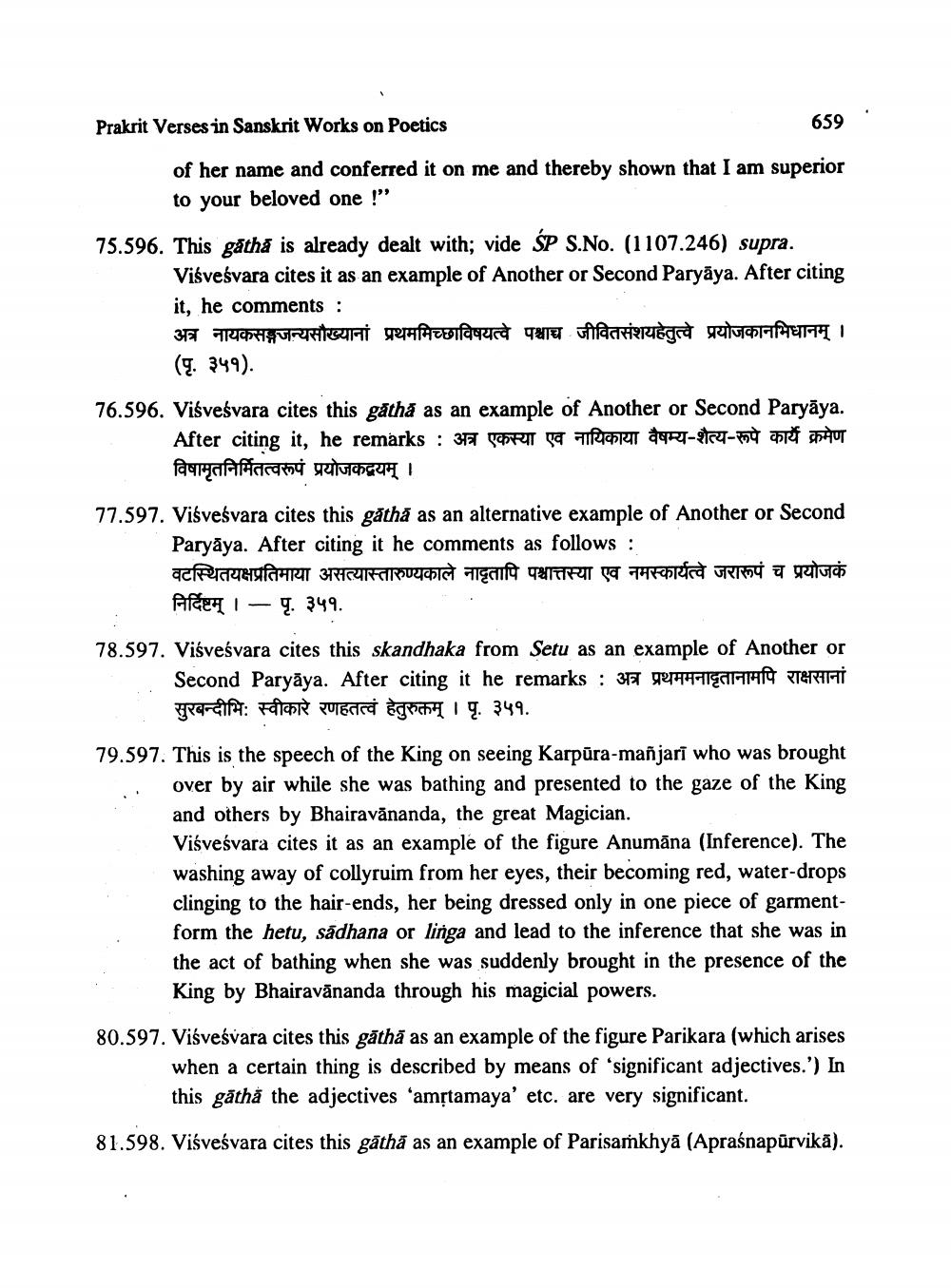________________
Prakrit Verses in Sanskrit Works on Poetics
659.
of her name and conferred it on me and thereby shown that I am superior to your beloved one !"
75.596. This gåtha is already dealt with; vide SP S.No. (1107.246) supra.
Visveśvara cites it as an example of Another or Second Paryāya. After citing it, he comments: अत्र नायकसङ्गजन्यसौख्यानां प्रथममिच्छाविषयत्वे पश्चाच जीवितसंशयहेतत्वे प्रयोजकानभिधानम् । (g. 349).
76.596. Visveśvara cites this gåtha as an example of Another or Second Paryāya.
After citing it, he remarks: 37 RT 5 PART ART-ty-m4 or HUT विषामृतनिर्मितत्वरूपं प्रयोजकद्रयम् ।
77.597. Viśveśvara cites this găthă as an alternative example of Another or Second
Paryāya. After citing it he comments as follows : वटस्थितयक्षप्रतिमाया असत्यास्तारुण्यकाले नादृतापि पश्चात्तस्या एव नमस्कार्यत्वे जरारूपं च प्रयोजकं After I – Ç. 349.
78.597. Visvešvara cites this skandhaka from Setu as an example of Another or Second Paryāya. After citing it he remarks : 3771
9 TERATTI rare: FAR FUEGO I g. 349.
79.597. This is the speech of the King on seeing Karpūra-mañjarī who was brought
over by air while she was bathing and presented to the gaze of the King and others by Bhairavānanda, the great Magician. Viśveśvara cites it as an example of the figure Anumāna (Inference). The washing away of collyruim from her eyes, their becoming red, water-drops clinging to the hair-ends, her being dressed only in one piece of garmentform the hetu, sādhana or linga and lead to the inference that she was in the act of bathing when she was suddenly brought in the presence of the King by Bhairavānanda through his magicial powers.
80.597. Visveśvara cites this gātha as an example of the figure Parikara (which arises
when a certain thing is described by means of 'significant adjectives.') In this gātha the adjectives 'amstamaya' etc. are very significant.
81.598. Viśveśvara cites this gathā as an example of Parisaṁkhyā (Apraśnapūrvikā).




